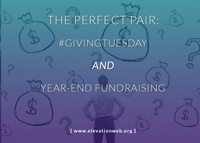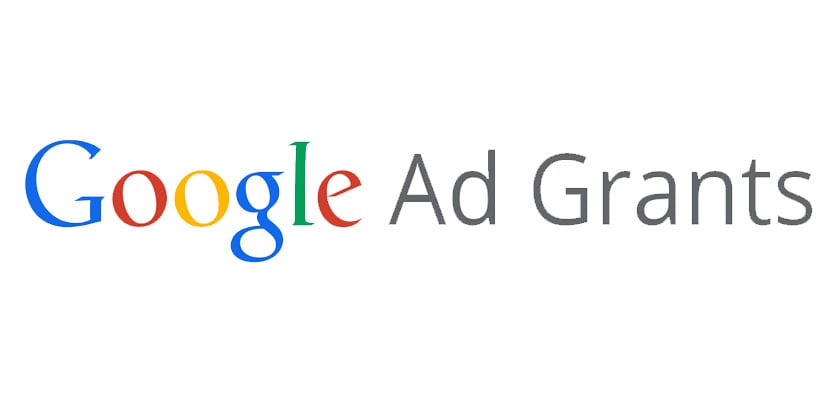While many organizations pivoted to virtual fundraising in 2020, even some of the largest nonprofits that regularly raise millions experienced steep declines in revenue— with decreases anywhere from 4 to 50+ percent.
Considering that virtual and hybrid fundraising is sticking around for the foreseeable future, now is the time to conduct a retroactive examination of your past strategy to discover any structural obstacles that are holding you back from your goals.
When it comes to virtual fundraising, you’re juggling a variety of tech solutions and engagements: your website, email newsletter, online fundraising platform, and CRM, to name a few. That’s simply too much to examine in one guide. So, let’s take a deep dive into one aspect of your virtual fundraising strategy that, if you’re underutilizing it, can cause your overall strategy to underperform.
We’re talking about social media, specifically about Facebook. Facebook can be a powerhouse tool for virtual fundraising, both empowering you to raise funds and raise your relationships with social fundraising supporters. But, few nonprofits use the platform in a way that actually elevates their virtual fundraising efforts.
Let’s walk through three common Facebook mistakes your nonprofit may be making that directly hold your virtual fundraising efforts back:
- You’re not engaging supporters in channel.
- You’re avoiding automation or otherwise resisting technology.
- You’re failing to grow relationships with virtual supporters.
Whether you’re hosting a virtual peer-to-peer fundraiser, an ambassador fundraiser, or an online fundraising event, Facebook empowers you to create a community for your supporters, connect one-on-one, and even raise donations. But not if the following three mistakes are holding your strategy hostage. Let’s dive in.
You’re not engaging supporters in channel.
You’re certainly already aware of Facebook’s fundraising capabilities. With its tools, you can solicit donations via a Donate button on Facebook posts and on your nonprofit’s profile. According to Double the Donation’s guide to virtual fundraising software, Facebook Live is another great way to leverage virtual fundraising. And of course, Facebook also empowers users to start peer-to-peer fundraisers on your behalf.
Past guidance for the next step after a donation, a user-started fundraiser, or another Facebook engagement was to direct those supporters to your other marketing channels (website, email newsletter, etc.). It’s not bad to connect with supporters through multiple channels. But, if you’re only using Facebook as a broadcast tool to send opportunities to your audience at large, you’re missing out on the full functionality of the platform.
One of the best ways to use Facebook in virtual fundraising is to engage supporters directly in channel, on the platform itself. Think of it this way: if a user chooses to engage with your nonprofit on Facebook, there’s a reason why they chose that platform rather than signing up for your email newsletter. Don’t push them away by asking them to sign up for your newsletter if they’d rather engage via social media.
When you engage with supporters directly on Facebook, you’re meeting them where they already are. Here are a few ways that you can engage supporters in channel:
- Create Facebook groups for supporters who have similar interests.
- Connect with individual supporters through Facebook Messenger and have one-on-one conversations.
- Encourage users to create fundraisers on the platform rather than directing them to give through your website or another dedicated peer-to-peer tool.
Facebook is a familiar platform for your supporters and already has a built-in audience for your fundraising efforts. Start building relationships with supporters on the platform on which they’re already seeking you out.
You’re avoiding automation or otherwise resisting technology.
Facebook first unveiled the “Donate” button in 2013, and since then, the tools available to advance your nonprofit’s virtual fundraising have grown rapidly. However, many nonprofits are hesitant to embrace these new technologies, fearing that they remove the “human” aspect of donor stewardship and replace it with cold algorithms and chatbots.
This fear is unwarranted for two reasons:
- Without evolving technology, it would be impossible for nonprofits to engage with their audience in meaningful ways as that audience grows.
- These tools don’t replace human interactions, but rather guide your social supporters in the right direction to connect with your nonprofit.
To illustrate these points, let’s consider a few tech innovations that your nonprofit can use to elevate your Facebook strategy and virtual fundraising as a result:
Automated messaging sequences.
While some nonprofits fear automated messaging, these tools allow you to connect with and have a conversation with each individual user who supports your nonprofit on Facebook.
Let’s say your organization has 2,000 Facebook fundraisers started on your behalf throughout the year. It would be a significant administrative lift for a member of your team to message each and every supporter manually and carry out a conversation.
On the other hand, automated messaging sequences can kick off that conversation and still be personalized to each user’s interests.
Targeted Facebook advertisements.
With Facebook ads, you’re not just broadcasting engagement opportunities and hoping someone bites. Instead, opportunities are displayed to supporters that have already expressed some interest in your nonprofit.
This targeted ad strategy personalizes the opportunities you share with users and makes it more likely that they’ll actually see opportunities that they’re interested in. Your supporters won’t miss out on a chance to engage and you won’t miss out on their contributions.
Facebook challenges.
According to this guide on virtual fundraising events, Facebook challenges draw on your supporters’ sense of healthy competition by challenging them to complete a task (and raise funds while doing so).
These virtual fundraising events are relatively quick to get started, have a low barrier to entry for your supporters (they simply need to choose to participate and share the news with their friends and family members), and create a sense of community for your social supporters.
For example, let’s say you host a month-long fitness challenge where supporters work out each day for a month and raise donations while doing so. Then you can create a Facebook group for participants to connect with one another around their shared interests!
You’re failing to grow relationships with virtual supporters.
According to the donor retention experts at Qgiv, retaining supporters is a more cost-effective way to raise money than recruiting new supporters.
When it comes to your other digital fundraising outlets, whether that’s donations made through your website, peer-to-peer fundraising via a dedicated P2P tool, or crowdfunding campaigns, we’d guess that you take concentrated efforts to thank those supporters and retain them after the campaign ends.
So, why wouldn’t you do the same with users who engage with your nonprofit through Facebook? Whether they’re starting a fundraiser, donating to a fundraiser, or even sharing posts about your efforts, you should.
When you focus on your relationships with each of your nonprofit’s individual social supporters, your Facebook fundraising strategy will show results beyond one-off campaigns here and there. Instead, you’ll be scaling up your social fundraising audience in a sustainable way and growing relationships with the next generation of supporters for your nonprofit’s virtual fundraising efforts.
Here are the three steps we recommend to do exactly that:
- Appreciate your social supporters. Begin by thanking each person who supports your nonprofit on social media. You should post thank-you notes on 100% of the fundraising campaigns started on your behalf, and if you’re tagged in any posts (such as, “I’ve just donated to [Name of Nonprofit]!”), post a thank-you comment back.
- Inspire your social supporters to engage again. With Facebook challenges, Live, and groups, you can create camaraderie for social supporters and inspire them to continue participating in your initiatives again and again.
- Grow your relationships over time. Invite supporters to connect with your nonprofit through Facebook Messenger. Using Messenger, send encouragement, gratitude, and upcoming opportunities. You can continue communicating year-round and have a personalized, one-on-one conversation with each individual supporter.
Developing your nonprofit’s community, social media-based and otherwise, is the key to increased engagement over time. It starts with a thank you note, a virtual place to congregate, and ongoing communication — just like if you were developing these relationships in person!
If your virtual fundraising strategy is underperforming, turn to one solution at a time to troubleshoot obstacles. When it comes to Facebook, you may be failing to engage supporters, make the most of automation, or to grow your relationships successfully. The solutions listed here will set you up to overcome these challenges. Good luck!



